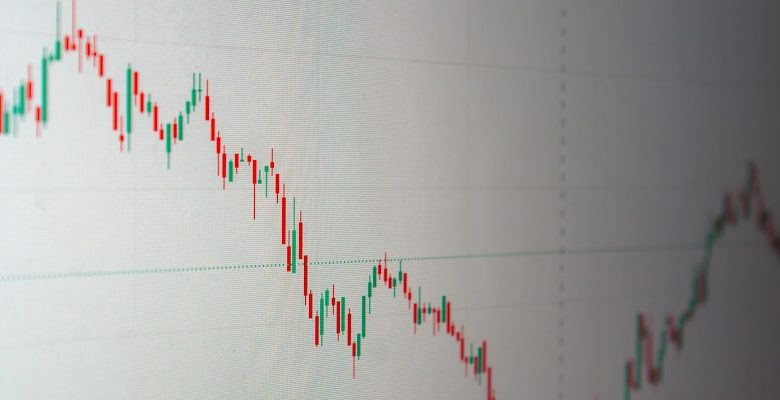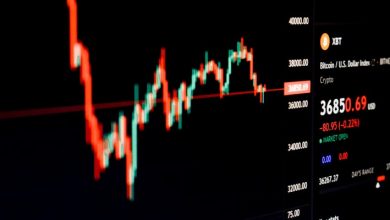Understanding Margin Trading and Its Risks

- What is Margin Trading?
- The Basics of Margin Trading
- Benefits of Margin Trading
- Risks Associated with Margin Trading
- Strategies for Minimizing Risks in Margin Trading
- Regulations and Guidelines for Margin Trading
What is Margin Trading?
Margin trading is a practice where an investor borrows funds from a broker to purchase securities. This allows investors to leverage their investments and potentially increase their returns. However, it also comes with significant risks. When trading on margin, investors must maintain a minimum balance in their account known as the maintenance margin. If the value of their investments falls below this level, they may face a margin call, requiring them to deposit more funds or sell off assets to meet the minimum requirement.
Margin trading can amplify both gains and losses, making it a high-risk strategy. While it can lead to substantial profits in a rising market, it can also result in significant losses if the market moves against the investor. It is important for investors to carefully consider their risk tolerance and financial situation before engaging in margin trading. Additionally, they should be aware of the costs associated with margin trading, including interest on the borrowed funds and fees charged by the broker.
Overall, margin trading can be a powerful tool for experienced investors looking to maximize their returns. However, it is crucial to fully understand the risks involved and have a solid risk management strategy in place. By carefully monitoring their investments and maintaining a disciplined approach, investors can potentially benefit from margin trading while mitigating the inherent risks.
The Basics of Margin Trading
Margin trading involves borrowing funds from a broker to trade financial assets. This allows traders to increase their buying power and potentially amplify their gains. However, it also comes with increased risks due to the use of leverage. It is important for traders to understand the basics of margin trading before engaging in it to avoid significant losses.
When trading on margin, traders are required to maintain a minimum amount of equity in their account, known as the maintenance margin. If the value of the account falls below this level, the trader may receive a margin call from the broker, requiring them to deposit additional funds to meet the minimum requirement.
Margin trading can be a powerful tool for experienced traders who understand how to manage risks effectively. It allows them to take advantage of market opportunities that may not be available with their own capital alone. However, it is crucial to be aware of the potential downsides, such as the possibility of losing more than the initial investment if the trade goes against them.
Before engaging in margin trading, traders should thoroughly educate themselves on how it works and the risks involved. They should also develop a solid risk management strategy to protect their capital and avoid excessive losses. By understanding the basics of margin trading and being prepared for the risks involved, traders can potentially increase their profits while minimizing potential downsides.
Benefits of Margin Trading
Margin trading offers several benefits to traders looking to maximize their potential returns. One of the main advantages is the ability to leverage your investments, allowing you to control a larger position with a smaller amount of capital. This can amplify your profits if the market moves in your favor. Additionally, margin trading provides the opportunity to diversify your portfolio without having to invest a significant amount of money upfront.
Another benefit of margin trading is the potential for higher returns compared to traditional trading. By using leverage, you can increase your exposure to the market and potentially earn more profits. This can be especially beneficial in volatile markets where there are larger price fluctuations. Additionally, margin trading allows you to take advantage of short-selling opportunities, enabling you to profit from falling prices as well as rising ones.
Furthermore, margin trading can be a useful tool for active traders who want to capitalize on short-term trading opportunities. With margin accounts, you can execute trades quickly and efficiently, taking advantage of market movements as they happen. This flexibility can help you react to changing market conditions and adjust your positions accordingly. Overall, margin trading can be a valuable strategy for experienced traders looking to enhance their trading performance and increase their potential profits.
Risks Associated with Margin Trading
Margin trading can offer the opportunity to amplify gains through borrowing funds to increase buying power. However, it also comes with significant risks that investors should be aware of before engaging in this strategy.
- One of the primary risks associated with margin trading is the potential for magnified losses. When trading on margin, investors are not only amplifying their potential profits but also their potential losses. This means that if the market moves against them, they could end up owing more money than they initially invested.
- Another risk of margin trading is the possibility of a margin call. A margin call occurs when the value of the securities in the investor’s account falls below a certain threshold, and the broker demands additional funds to bring the account back up to the required level. If the investor is unable to meet the margin call, the broker may liquidate their positions to cover the shortfall.
- Additionally, margin trading exposes investors to the risk of increased volatility. Since margin trading involves borrowing funds to trade, investors may be forced to sell securities at inopportune times to meet margin requirements, which can exacerbate losses during times of market volatility.
- Furthermore, investors engaging in margin trading are also subject to interest charges on the borrowed funds. These interest charges can eat into profits and potentially outweigh any gains made through leveraging.
- Lastly, margin trading requires a high level of sophistication and risk management skills. Investors need to carefully monitor their positions, set stop-loss orders, and be prepared to react quickly to market movements to avoid significant losses.
Overall, while margin trading can be a powerful tool for experienced investors looking to maximize their returns, it is not without its risks. It is crucial for investors to fully understand these risks and have a solid risk management strategy in place before engaging in margin trading.
Strategies for Minimizing Risks in Margin Trading
One of the most effective ways to mitigate risks in margin trading is to diversify your portfolio. By spreading your investments across different assets, you can reduce the impact of any one investment performing poorly. This strategy helps to protect your overall investment from significant losses. Additionally, it is crucial to set stop-loss orders to automatically sell your assets if they reach a certain price point. This can help limit your losses and prevent emotional decision-making during volatile market conditions.
Another key strategy is to carefully monitor your margin levels and avoid overleveraging your trades. Keeping a close eye on your margin requirements can help prevent margin calls, which can result in the forced liquidation of your assets. It is also important to conduct thorough research before making any trades and to stay informed about market trends and news that may impact your investments.
Moreover, it is recommended to start with a smaller investment amount when you first begin margin trading. This can help you gain experience and confidence in your trading abilities without risking a significant amount of capital. As you become more comfortable with margin trading, you can gradually increase the size of your trades.
Additionally, consider working with a financial advisor or mentor who has experience in margin trading. They can provide valuable insights and guidance to help you navigate the complexities of margin trading successfully. By following these strategies and staying disciplined in your approach, you can minimize risks and increase your chances of success in margin trading.
Regulations and Guidelines for Margin Trading
Regulations and guidelines for margin trading are put in place to protect investors and ensure the stability of the financial markets. It is essential for traders to be aware of these rules to avoid potential risks associated with margin trading.
One of the key regulations in margin trading is the requirement for traders to maintain a minimum margin level in their accounts. This margin acts as a buffer against potential losses and ensures that traders have enough funds to cover their positions.
Additionally, regulators often impose limits on the amount of leverage that traders can use in margin trading. This is to prevent traders from taking on excessive risks that could lead to significant losses. By limiting leverage, regulators aim to promote responsible trading practices and protect investors.
Furthermore, margin trading regulations often require traders to undergo a thorough risk assessment before engaging in margin trading. This assessment helps traders understand the potential risks involved and make informed decisions about their trading activities.
In conclusion, understanding and adhering to regulations and guidelines for margin trading is crucial for traders looking to minimize risks and protect their investments. By following these rules, traders can create a more secure trading environment for themselves and contribute to the overall stability of the financial markets.



